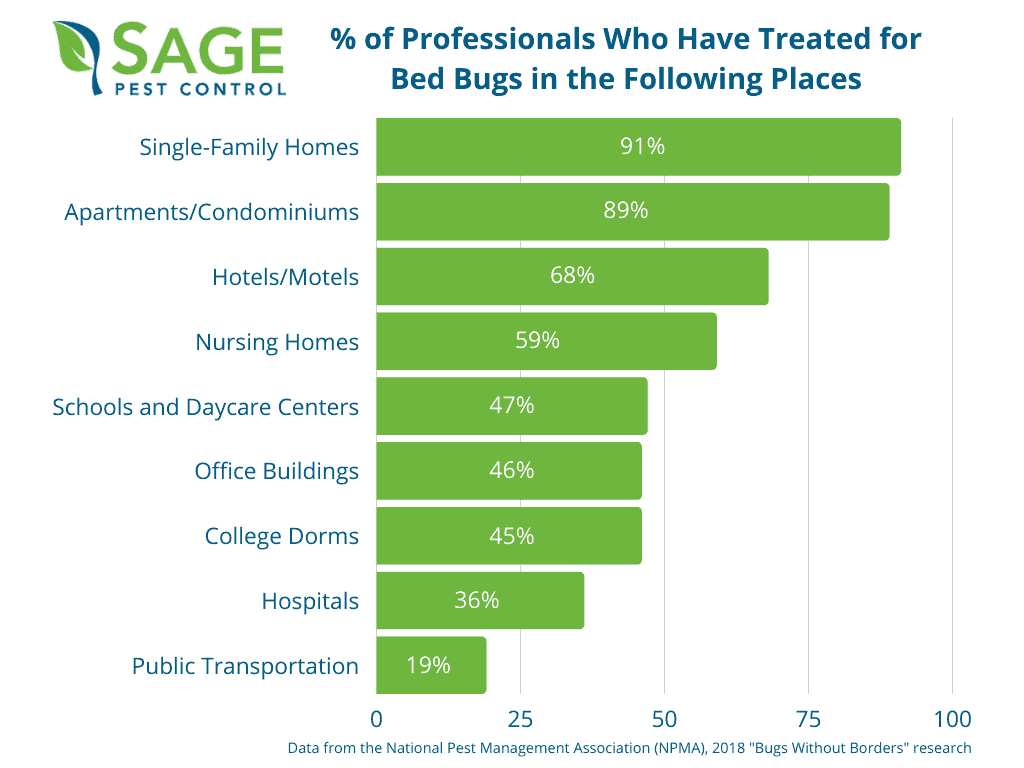The phrase, “Sleep tight, don’t let the bed bugs bite,” has been around since at least the 17th century. However, bed bugs themselves have plagued humanity for easily 3,300 years or more! Despite people’s longstanding relationship with them, there are still many myths and misconceptions about how these blood-sucking pests behave.
Below, check out the top bed bug “myths,” and see if your knowledge of this pest is up to snuff!
You Might Also Like: Mythbusters: Mouse and Rat Edition
True or False: Bed bugs only live in beds.
False. It’s true that bed frames and mattresses are places that bed bugs frequently inhabit. However, these pests also hide in a wide variety of locations, including:
- Underneath loose wallpaper
- Underneath wall hangings
- Inside furniture and wall joints
- Inside furniture seams
- Inside electrical outlets
- In between cushions
- In high-pile, “shag” rugs and carpeting
You can even find the occasional bed bug nestled in the head of a screw!
True or False: If you “brought home” bed bugs, you got them from a hotel.
False. If you discover a bed bug infestation in your home shortly after staying in a hotel, bed bugs likely hitched a ride on your clothes or luggage from that location. That being said, it’s possible to pick up bed bugs from just about anywhere.
Your chances of picking up bed bugs increases in public spaces where you stop to spend time. Pest professionals have eliminated bed bugs from numerous public and private areas, including nursing homes, hospitals, schools, daycares, dorms, public transportation, laundromats, and even movie theaters!

True or False: Bed bugs can live for several months without a blood meal.
True, in many cases. Adult bed bugs have a much better chance of surviving than younger ones for such a long time without a blood meal. Some adult bed bugs have survived over 400 days without food in laboratory tests, specifically in a chilly environment.
True or False: Bed bugs spread disease to humans.
False--fortunately! As it stands right now, bed bugs are not known to transmit any disease to human beings. However, bed bug bites can be extremely itchy and uncomfortable and lead to pain and lack of sleep. The CDC also notes that excessive scratching to relieve the itching can sometimes lead to a secondary skin infection and that bed bug bites may cause an allergic reaction in some people.
True or False: Bed bugs won’t come out if you leave the lights on at night.
False. While it’s true that bed bugs are nocturnal and prefer a dark environment, don’t be surprised if you get bitten in broad daylight! Even with the lights on, these pests may still come out if they’re hungry enough and there’s a food source readily available.
True or False: Bed bugs are highly resistant to many pesticides.
True. By the time DDT was banned in 1972, most bed bugs were already resistant to it--in fact, bed bug resistance to this pesticide was widespread by the 1950s. Research suggests that these pests produce detoxifying enzymes that have helped their bodies combat numerous poisons’ effects throughout the 20th and 21st centuries.
In short, if you discover a bed bug infestation in your home, a can of bug spray from your local hardware store is not going to solve the problem. Involve a trusted pest control expert with advanced tools and treatments to provide you with an effective, long-term solution.
For comprehensive bed bug treatment throughout Charlotte, Greensboro, Raleigh, and the surrounding areas, you can rely on the pros at Sage Pest Control. Call (704) 413-3398 or contact us online today!


